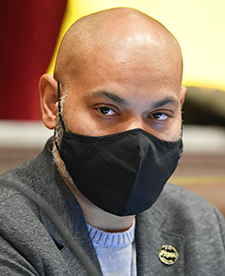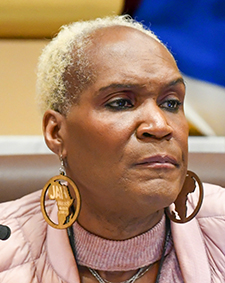It’s been a year-and-a-half since Minneapolis voters opened the door to rent control in the city.
In November 2021, more than 53% of the city’s electorate voted to amend the city charter, giving the City Council the power to place a rent control proposal on a future ballot.
Mayor Jacob Frey has been a skeptic throughout the process. In 2021, he blocked a proposal to allow citizens to directly place a rent control measure on the ballot. Last December, he threatened to veto a proposal that emerged from a council-convened task force: cap annual rent increases at 3%.
“I don’t think we should be striving for a least-bad option. I think we should make a decision that’s right for the city,” Frey said in an interview with MinnPost in February.
Finally, on Tuesday, several of Frey’s top deputies presented their conclusion to the council: Don’t move ahead with rent control. Staff said that even relatively lenient restrictions on rent increases could cost the city revenue and scare off housing development.
Nothing about the staff’s recommendation stops rent control supporters from charging ahead anyway. However, City Council members would need to get past the mayor. Frey would have the power to veto any attempt to put the issue on the ballot, and the council would need nine votes to override a veto.

“I think it’s viable,” Payne said after the council meeting Tuesday. “I think we should move forward with it. I think that we should use the democratic process to answer some of our most challenging questions.”
Last year, the City Council appointed a 25-member working group to study the issue. In December 2022, the group published a final report advancing two “frameworks” for rent control in Minneapolis.
- Framework 5: A majority of the working group — 14 of the 25 members — favored a proposal to block landlords from raising rents more than 3% each year with limited exceptions.
- Framework 7: A substantial minority — 11 of the 25 members — preferred a softer cap that would allow property owners to raise rents by 5% or 7% annually, plus some flexibility to account for rising inflation. The minority group also wanted to exempt newly-built, affordable or owner-occupied units from the rent control limits.
But at a council committee meeting Tuesday, a parade of the city’s top officials on budget, policy and housing matters stood to urge the City Council against pursuing either option, warning that even adopting the more-permissive Framework 7 could be disastrous for the city.
City officials said the main goal of a rent control policy would be to provide relief to the lowest-income tenants — who, in Minneapolis, saw their rents rise 44% between 2006 and 2019, despite very little growth in their incomes.
But officials predicted that capping rent would cause a cascade of effects that would harm these vulnerable renters most. Under Framework 5, staff projected rent control would cause new construction permits to drop off by as much as 75% in the first year — which would undercut the city’s broader goal to expand housing supply, which also helps ease upward pressure on rent.
This is one of the ways that staff argued that rent control, paradoxically, could push rents up faster.
For most of the last two decades, average rents in Minneapolis have increased between 1.5% and 2.5% each year. But staff argued that a hard cap could incentivize “more aggressive rent increases”: Landlords might squeeze every penny of their allowed increase of 3% or more every year — because if they don’t, they might lose out on future revenue.
City officials readily admitted these projections were not the result of a peer-reviewed analysis; they relied on academic studies of other cities’ rent control policies in conjunction with Minnesota data to make their estimates. Staff had tried, and failed, to retain an outside consultant to run a more complex statistical analysis on Minneapolis.
But some University of Minnesota scholars reached different conclusions.
For instance, in a September 2021 white paper, the Center for Urban and Regional Affairs (CURA) found “little empirical evidence to show that rent control policies negatively impact new construction.”
CURA’s research also found that research on other cities’ rent control programs showed that stronger restrictions were effective at “maintaining below-market rent levels and moderating price appreciation.”

“I don’t think [staff] had the time and resources needed to really do the type of thorough analysis to answer common questions that we have from a policymaking position,” Payne said. “I was hoping to see some sort of statistical modeling, some source data that we could refer to.”
But Minneapolis officials said they also made their prediction by looking “across the river.”
Six months after St. Paul voters enacted a stringent rent control policy (akin to Minneapolis’ Framework 5) in November 2021, new multifamily housing development dropped off by roughly 80%. Last September, St. Paul leaders loosened many of restrictions in the rent control ordinance (with provisions that look more like Framework 7, Minneapolis staff said).
This step by St. Paul’s City Council stemmed from “difficulties and problems [rent control] created around specific developments that were already in the pipeline,” said Angie Skildum, Minneapolis’ director of development finance. She said Minneapolis staff consulted with St. Paul developers and city officials in writing their recommendation.

Without naming these policies specifically, Council President Andrea Jenkins noted her desire for “targeted” programs to help vulnerable renters.
“Whatever policy we come up with — and I want to see something happen for these very challenged members of our community — it has to be targeted, it has to be direct,” Jenkins said, “and it can’t exacerbate the problem that our community members are suffering from currently.”

0 Commentaires